Elevating Your Dining Experience: Luxury Glassware for Discerning Collectors

Contents
- Introduction: Why Luxury Glassware Defines Sophistication in Fine Dining
- 1. Matching Glassware to Beverages: A Sommelier‘s Guide
- 2. The Allure of Handcrafted Glassware: Artistry in Every Sip
- 3. Crystal Glassware: The Gold Standard of Luxury
- 3. The Science of Thickness and Weight: Balancing Form and Function
- 5. Personalization: Turning Glassware into Heirlooms
- 6. Classic vs. Contemporary: Design Trends in Luxury Glassware
- 7. Unique Features: Innovation Meets Luxury
- 8. Care and Maintenance: Preserving Beauty for Generations
- 9. Creating a Luxurious Table Setting: Glassware as the Centerpiece
- 10. Investing in Quality Sets: Building a Collection That Lasts
- Conclusion: Toast to a Life Elevated by Luxury Glassware
Introduction: Why Luxury Glassware Defines Sophistication in Fine Dining
In the world of fine dining, every detail contributes to the experience—and few elements make a statement quite like luxury glassware. More than mere vessels, these meticulously crafted pieces transform ordinary sips into sensory journeys, elevating meals from memorable to unforgettable. For Western consumers who value elegance, craftsmanship, and the art of hospitality, the right glassware is far more than an accessory: it’s a reflection of personal style and a commitment to savoring life’s moments.
Luxury glassware marries functionality with artistry, enhancing the bouquet of a bold Cabernet, preserving the effervescence of champagne, and showcasing the rich amber of aged whiskey. In Western markets, where dining is as much about ambiance as flavor, investing in premium glassware has become a hallmark of sophisticated entertaining. From intimate dinners in Parisian salons to grand celebrations in Manhattan lofts, your choice of glassware speaks to your attention to detail and respect for the occasion.
This guide is tailored to discerning Western audiences, offering insights into selecting, styling, and maintaining luxury glassware. Whether you’re a seasoned collector or new to upgrading your table, these tips will help you curate a collection that impresses guests and deepens your connection with every beverage.
1. Matching Glassware to Beverages: A Sommelier‘s Guide
The golden rule of luxury glassware is simple: form follows function. Each beverage, from crisp white wine to robust spirits, demands a vessel designed to unlock its unique character. This isn’t just about aesthetics—it’s about maximizing sensory pleasure, a principle Western culinary culture has refined for centuries.
Wine Glasses: Precision in Every Pour
- Red Wine Glasses: Bold varieties like Cabernet Sauvignon and Malbec shine in glasses with wide bowls and gently tapered rims. This design aerates the wine, releasing notes of blackcurrant, tobacco, or vanilla, while directing liquid to the palate’s back, softening bitterness. Riedel’s Vinum series, beloved by sommeliers, calibrates each model to specific grapes for optimal flavor.
- White Wine Glasses: Sauvignon Blanc and Chardonnay thrive in narrower bowls that preserve acidity and concentrate citrus or tropical aromas. Zalto’s Denk’Art White Wine Glasses, with their tulip shape, ensure the wine hits the mid-palate, highlighting crispness.
- Sparkling Wine Glasses: Champagne and Prosecco need long, narrow flutes to maintain bubbles. However, Western mixologists increasingly recommend coupe glasses for vintage champagnes—their wider bowls enhance complex aromas, turning sips into sensory events.
Spirits and Cocktails: Elevating the Drinking Ritual
- Whiskey Glasses: Bourbon lovers favor heavy-bottomed rocks glasses to withstand ice, while Scotch enthusiasts prefer snifters that concentrate smoky, peaty notes. The Glencairn Glass, a staple in Western bars, balances a wide bowl (for aeration) with a narrow rim (for focused aroma).
- Cocktail Glasses: Martini glasses’ iconic V-shape isn’t just stylish—they keep drinks cold, slow dilution, and let herbal or citrus notes shine. For tiki cocktails, double-walled glasses (popularized by Bodum) insulate without condensation, a must for summer patios.
Table Essentials
- Water Glasses: In formal settings, water glasses should complement—not compete with—wineware. Schott Zwiesel’s Pure Collection, with its sleek curves, is a favorite in Michelin-starred restaurants for its understated elegance.
- Dessert Wine Glasses: Smaller bowls (like Riedel’s Sauternes design) concentrate the sweetness of ports and sherries, ensuring each sip balances richness with bright acidity—key for pairing with decadent desserts.
By aligning glassware with beverages, you’re not just following tradition—you’re honoring a practice Western food lovers have perfected: turning every drink into a deliberate act of appreciation.
2. The Allure of Handcrafted Glassware: Artistry in Every Sip
In an age of mass production, handcrafted glassware stands as a testament to human skill—and Western consumers are willing to invest in pieces with stories. Handblown and hand-cut glassware isn’t just luxury; it’s a connection to centuries-old craftsmanship, where imperfections become badges of uniqueness.
What Makes Handcrafted Glassware Special?
- Uniqueness: No two handblown glasses are identical. Subtle ripples in a Baccarat Harcourt glass or slight variations in a Kosta Boda design make each piece one-of-a-kind—highly prized in collector circles.
- Mastery: Artisans spend decades perfecting techniques like mouth-blowing (shaping molten glass with breath) and hand-cutting (etching patterns with diamond tools). Lalique’s frosted motifs, for example, require 15–20 hours of work per piece, blending art with functionality.
- Heritage: Brands like Baccarat (est. 1764) and Lalique (est. 1888) have histories tied to European royalty, their pieces gracing palaces and luxury hotels. Owning them isn’t just about utility—it’s about preserving a legacy.
Trends Resonating with Western Buyers
- Bespoke Design: Artisans now offer custom services, from engraving family crests to creating wedding sets. New York-based Simon Pearce collaborates with couples to design heirloom glassware, turning special occasions into lasting memories.
- Sustainable Craftsmanship: Eco-conscious Western shoppers seek handcrafted pieces made with recycled glass or renewable energy. Seattle’s Glassybaby, for instance, uses 100% recycled glass and donates 10% of profits to charity—aligning luxury with purpose.
Investing in Handcrafted Pieces
Handcrafted glassware often comes with a premium price tag, but for Western families, it’s a worthwhile investment. Kosta Boda’s vibrant hand-painted glasses, for example, appreciate in value while enhancing daily meals. Displayed in glass cabinets or used at milestones, they become part of family narratives, passed down through generations.
In a world of disposable goods, handcrafted glassware offers Western consumers something rare: a tangible link to the past, made with the care only human hands can provide.
3. Crystal Glassware: The Gold Standard of Luxury
For Western markets, crystal is synonymous with luxury—and for good reason. Its brilliance, weight, and ability to enhance beverages make it the cornerstone of fine dining, with a history dating to 17th-century Europe.
Crystal vs. Glass: What‘s the Difference?
- Composition: Traditional crystal contains 24%+ lead oxide, boosting density and light refraction for that signature sparkle. Modern lead-free alternatives (using zinc or titanium) offer similar clarity without health concerns—a key selling point for health-conscious Western buyers.
- Clarity: Crystal’s molecular structure lets more light pass through, making it ideal for showcasing wine colors: the deep purple of a Bordeaux, the pale gold of a Chardonnay.
- Sound: Tap a crystal glass, and it sings with a long, resonant ring—a detail Western connoisseurs use to judge quality.
Why Crystal Dominates Luxury Settings
- Aesthetic Impact: Waterford’s Lismore collection, with its intricate diamond cuts, catches light like no other, turning dinner tables into galleries. It’s a favorite for Western holidays and celebrations.
- Sensory Enhancement: Thin-walled crystal (like Zalto’s designs) lets lips connect seamlessly with the glass, while its substantial weight adds a satisfying heft—details sommeliers say enhance taste perception.
- Durability: Contrary to myth, well-made crystal is surprisingly robust. Lalique’s crystal glasses are designed for regular use, making them perfect for both formal dinners and casual weeknight sips.
Trends in Western Crystal Markets
- Minimalist Designs: While ornate cuts endure, many buyers now prefer sleek styles like Riedel’s Ouverture series, which blends classic clarity with contemporary lines—ideal for modern Western homes.
- Sustainable Luxury: Brands like Nambé lead with recycled crystal, appealing to eco-minded shoppers who want luxury without compromise. Their designs prove sustainability and elegance can coexist.
Investing in crystal glassware isn’t just about aesthetics—it’s about embracing a tradition Western culture has elevated to an art: where each piece is both a tool and a treasure.
3. The Science of Thickness and Weight: Balancing Form and Function
How a glass feels in your hand matters as much as how it looks on the table—and Western designers spend years perfecting that balance. Thickness and weight aren’t just details; they’re cues to quality.
Why Thickness Matters
- Rim Thickness: A thin rim (1mm or less) lets the beverage take center stage. Riedel’s laser-cut rims are so fine they feel almost weightless, a feature Western sommeliers praise for unobstructed taste.
- Bowl Thickness: Thick bowls may seem sturdier, but they insulate drinks, altering temperatures—bad for wines that need to breathe. Thin-walled crystal (like Schott Zwiesel’s Tritan) lets wines interact with air, releasing their full bouquet.
Weight: Finding the Sweet Spot
- Heavy vs. Light: Traditional crystal is substantial, but modern designs (like Zalto’s lightweight glasses) prove luxury doesn’t require bulk. These are favorites in Western restaurants for their ergonomic feel during long meals.
- Balance: A well-balanced glass distributes weight evenly, resisting tipping. Schott Zwiesel’s Tritan Crystal uses a proprietary formula to create glasses that are lightweight yet chip-resistant—perfect for busy Western households.
How to Test Quality Like a Pro
- Feel: Run a finger along the rim—it should be smooth, no burrs.
- Symmetry: Mass-produced glasses should have even bowls; handcrafted ones may have subtle variations (a sign of authenticity).
- Temperature Control: Double-walled glasses (Bodum’s Pavina line) keep iced drinks cold without condensation—essential for Western summer barbecues and poolside gatherings.
In Western fine dining, thickness and weight are silent signals of thoughtfulness—proof that luxury lives in the details.
5. Personalization: Turning Glassware into Heirlooms
In Western culture, personalization turns objects into stories—and luxury glassware is no exception. Engraved, monogrammed, or custom-designed pieces add sentiment that mass-produced items can’t match.
Popular Personalization Trends in Western Markets
- Monograms: Three-letter monograms (first, last, middle initials) on wine glasses or decanters are timeless. Baccarat’s in-house engraving offers fonts from elegant serifs to modern sans-serifs, ensuring a match for every style.
- Dates and Quotes: Weddings and anniversaries often feature glasses etched with “Est. 2024” or meaningful phrases. It’s a trend seen in Western wedding registries, turning champagne flutes into keepsakes.
- Custom Artwork: Family crests, hand-drawn illustrations, or even pet portraits transform glassware into art. British brand Tom Dixon collaborates with artists on limited-edition designs, coveted by collectors for their uniqueness.
Occasions for Personalized Glassware
- Gifts: Engraved Waterford whiskey glasses are staples in Western gifting, while personalized wine glasses make housewarming presents feel thoughtful, not generic.
- Corporate Gifting: Western companies use custom glassware (with subtle logos) to impress clients, balancing professionalism with luxury.
- Family Traditions: Many Western families pass down personalized glassware, adding new engravings with each generation—creating a tangible link to heritage.
Choosing the Right Personalization
- Placement: Engravings on wine glasses work best on the bowl (visible) or base (subtle).
- Style: Match fonts to the glass: ornate scripts for classic crystal, clean lines for modern designs.
- Material Care: Gold or silver accents can be engraved, but ask for a specialist—delicate materials need gentle handling.
Personalized glassware isn’t just about ownership—it’s about creating moments Western culture cherishes: stories, memories, and the joy of seeing your identity in daily rituals.
6. Classic vs. Contemporary: Design Trends in Luxury Glassware
Western markets thrive on diversity, and glassware design is no exception. Whether you love 18th-century elegance or 21st-century minimalism, there’s a style to match your taste.
Classic Designs: Timeless Appeal
- Ornate Cuts: Waterford’s Lismore and Baccarat’s Harcourt have remained popular for decades, favored by Western royalty and celebrities for their drama and detail.
- Metallic Accents: Gold-rimmed glasses (like Lenox’s Autumn collection) add warmth to traditional tablescapes—a trend revived in Western retro dining.
- Symmetry: Classic designs prioritize balance, with evenly proportioned bowls and stems that evoke order and harmony.
Contemporary Designs: Pushing Boundaries
- Minimalism: Muji’s glassware line embraces “less is more,” perfect for modern Western apartments with sleek decor. Their plain designs let the beverage shine.
- Asymmetry: Handblown glasses with uneven rims (like Glassybaby’s) add an organic, artistic feel—popular in Western bohemian homes.
- Mixed Materials: Glass with wooden stems (Skagerak’s Oak Wine Glasses) or leather wraps blends texture and durability, a hit in Nordic-inspired Western interiors.
Mixing Styles: The Art of Eclecticism
Western interior designers recommend pairing classic and contemporary pieces for depth. Try Baccarat crystal wine glasses with modern double-walled water glasses—creating a table that feels timeless yet fresh. The key: balance ornate pieces with simple ones to avoid clutter.
In Western design philosophy, glassware is an extension of your style—whether you lean traditional, modern, or eclectic, the goal is a table that feels uniquely yours.
7. Unique Features: Innovation Meets Luxury
Today’s luxury glassware isn’t just beautiful—it’s smart, with features that solve problems and delight guests. These details set standout pieces apart in Western markets.
Functional Innovations
- Double-Walled Construction: Bodum’s Pavina glasses insulate hot tea and iced wine, keeping them at ideal temperatures without condensation—perfect for Western regions with four distinct seasons.
- Stackable Designs: Joseph Joseph’s stackable glasses save space in small Western apartments, proving convenience doesn’t require sacrificing style.
- Dishwasher Safety: While crystal needs handwashing, modern options like Schott Zwiesel’s Tritan line are dishwasher-safe—appealing to busy Western families who want luxury without hassle.
Aesthetic Enhancements
- Etched Patterns: Lalique’s Bacchus wine glasses feature delicate floral etchings that add texture without overwhelming—ideal for formal Western dinners.
- Colored Glass: Tinted glass (pale blue, smoky gray) adds subtle flair. Riedel’s Oaked Chardonnay glass, with a faint green tint, complements the wine’s hue—a trick Western color experts praise.
- Textured Surfaces: Hammered or ribbed glass (Crate & Barrel’s Artisanal Collection) catches light and adds grip—practical for Western outdoor gatherings.
Sustainable Features
- Recycled Materials: Ocean Glass uses recycled glass for eco-friendly pieces, appealing to Western buyers who prioritize sustainability.
- Longevity: Zalto’s durable designs are made to last, reducing waste—aligning with Western circular economy values.
These features prove Western luxury isn’t just indulgence—it’s about enhancing life’s moments, making daily rituals feel special.
8. Care and Maintenance: Preserving Beauty for Generations
Luxury glassware is an investment, and proper care keeps it stunning for years. Western collectors know maintenance preserves not just beauty, but history.
Cleaning Tips by Material
- Crystal (Lead or Lead-Free):
- Handwash with mild soap and warm water; avoid harsh detergents (they cloud crystal).
- Use a soft sponge to prevent scratches.
- For red wine stains: soak in white vinegar + water, then rinse.
- Handblown Glass:
- Avoid extreme temperature changes (hot glass on cold surfaces causes cracks).
- Dry immediately with a lint-free cloth to prevent water spots—critical for clear designs.
- Gold/Silver Accents:
- Never put in the dishwasher (heat tarnishes metal).
- Polish gently with a jewelry cloth to maintain shine.
Storage Solutions
- Cabinet Storage: Felt-lined shelves or MDesign’s adjustable dividers prevent glasses from touching—essential for Western homes with curated collections.
- Stemware Racks: Under-cabinet hanging racks save space in small Western kitchens while keeping wine glasses safe.
- Display Cases: IKEA’s Sinnerlig glass-front cabinets with LED lighting showcase heirlooms while protecting them from dust—a favorite in Western dining rooms.
Handling Do‘s and Don‘ts
- Do hold stemmed glasses by the stem (avoids warming the drink).
- Don‘t stack stemmed glasses (pressure breaks stems).
- Do check for chips before use—small flaws worsen over time.
With proper care, luxury glassware becomes a family legacy, enjoyed at Western milestones for generations.
9. Creating a Luxurious Table Setting: Glassware as the Centerpiece
A well-set table is a harmony of elements, and glassware conducts the symphony. In Western entertaining culture, the goal is a cohesive look that makes guests feel valued.
Formal Settings: Elegance in Every Detail
- Placement: Follow the “outside-in” rule: first-course glasses are farthest from the plate. Wine glasses go above the knife, water glasses to the left—Western etiquette at its most polished.
- Pairing with China: Crystal complements fine china like Wedgwood’s bone china. Gold-rimmed china pairs beautifully with gold-accented glasses for a cohesive look.
- Lighting: Candles or warm overhead lights make crystal sparkle, creating a romantic ambiance—key for Western dinner parties.
Casual Settings: Effortless Sophistication
- Simplify: Use 2–3 glass types (all-purpose wine glasses, water glasses) instead of a full set. Riedel’s Everyday series offers versatility for relaxed Western gatherings.
- Mix Materials: Mason jar glasses with copper mugs add rustic charm—popular for Western countryside barbecues or backyard potlucks.
- Personal Touches: A sprig of rosemary in water glasses or custom stirrers make guests feel special without formality.
Seasonal Themes
- Summer: Colorful, lightweight glasses with citrus garnishes evoke freshness—perfect for Western patio dinners.
- Winter: Crystal glasses with gold accents, paired with evergreen decor, create warmth—staples in Western Christmas tablescapes.
Western etiquette experts agree: the best table settings feel intentional but not forced. Glassware should enhance the occasion, not overshadow the food or company.
10. Investing in Quality Sets: Building a Collection That Lasts
A luxury glassware collection is an investment in moments. For Western buyers, choosing the right set means balancing versatility, quality, and personal taste.
What to Look for in a Set
- Versatility: A core set should include red wine, white wine, water, and champagne glasses. Riedel’s Vinum Essential Set covers these, ideal for beginners.
- Brand Reputation: Stick to heritage brands (Baccarat, Lalique) or innovative newcomers (Zalto) with proven track records in Western markets.
- Warranty: Many luxury brands offer warranties—Schott Zwiesel’s Tritan line comes with a 10-year guarantee, reassuring buyers of durability.
When to Splurge vs. Save
- Splurge on: Wine glasses (daily use) and crystal sets (special occasions)—their quality directly impacts taste.
- Save on: Water glasses or casual tumblers, where functionality matters more than brand.
Building a Collection Over Time
Start with a core set, then add specialty pieces (whiskey glasses, dessert wine glasses) as needed. Western collectors often focus on one brand for consistency, but mixing brands works too—there’s no “right” way, just what fits your lifestyle.
In the end, the best collection grows with you, adapting to new tastes and memories—reflecting the life you live and the joy of sharing it.
Conclusion: Toast to a Life Elevated by Luxury Glassware
Luxury glassware is more than a collection—it’s a celebration of moments that matter. For Western consumers, these pieces are vessels for connection: a wedding toast, a quiet dinner, a holiday gathering. They turn sips into rituals, reminding us to slow down and savor life.
From handcrafted crystal to innovative designs, the right glassware elevates not just drinks, but experiences. It speaks to your eye for detail, appreciation for craftsmanship, and desire to make every moment special.
As you raise your next glass—whether handblown crystal or personalized tumbler—remember: luxury isn’t excess. It’s choosing pieces that bring joy, tell stories, and turn everyday moments into memories. Cheers to that.


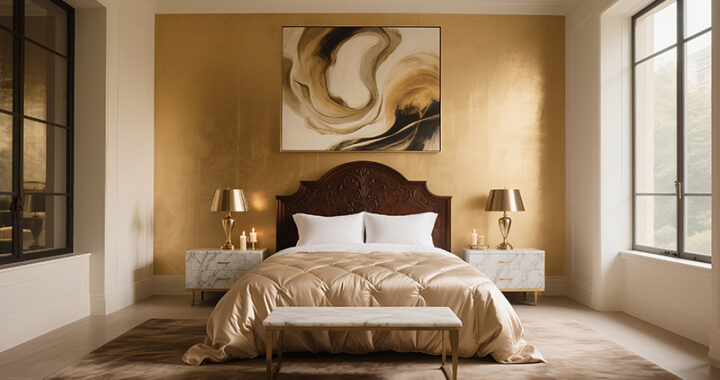 Home Decor Ideas to Make Your Home Feel Like a Luxury Hotel
Home Decor Ideas to Make Your Home Feel Like a Luxury Hotel 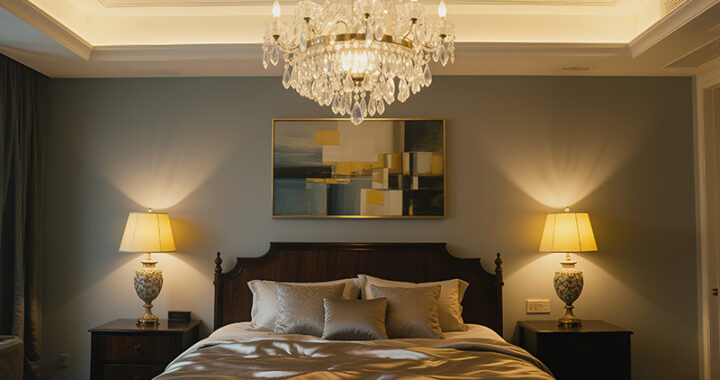 Best Luxury Accent Lighting for Every Room
Best Luxury Accent Lighting for Every Room 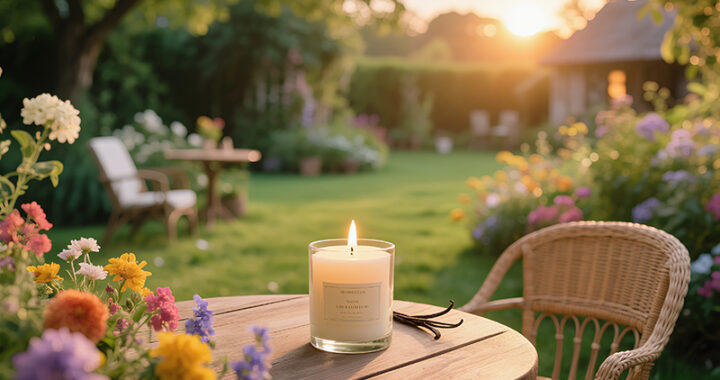 Best Luxury Candles for a Cozy and Elegant Home
Best Luxury Candles for a Cozy and Elegant Home 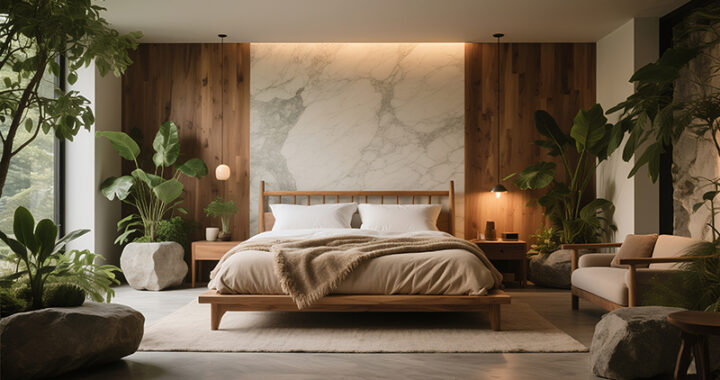 Best Luxury Bed Frames for a Stylish Bedroom
Best Luxury Bed Frames for a Stylish Bedroom 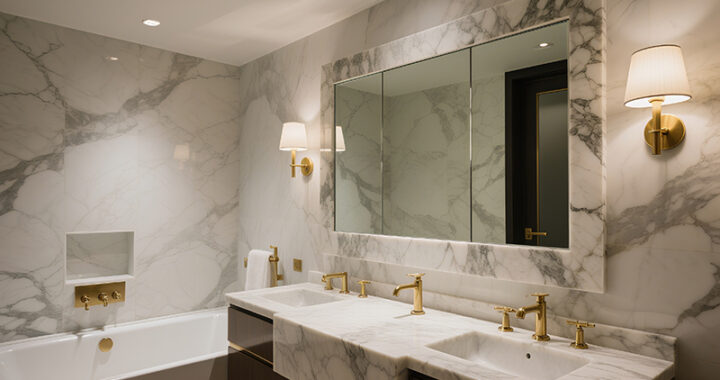 Best Luxury Bathroom Mirrors for a Stylish Touch
Best Luxury Bathroom Mirrors for a Stylish Touch 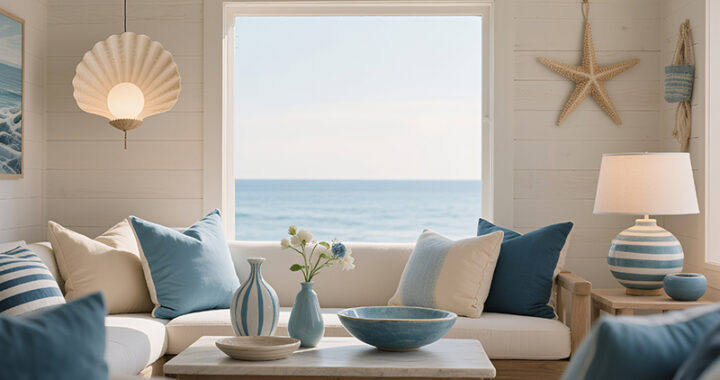 Luxury Coastal Home Decor Ideas: Elevate Your Beach House with Timeless Elegance
Luxury Coastal Home Decor Ideas: Elevate Your Beach House with Timeless Elegance